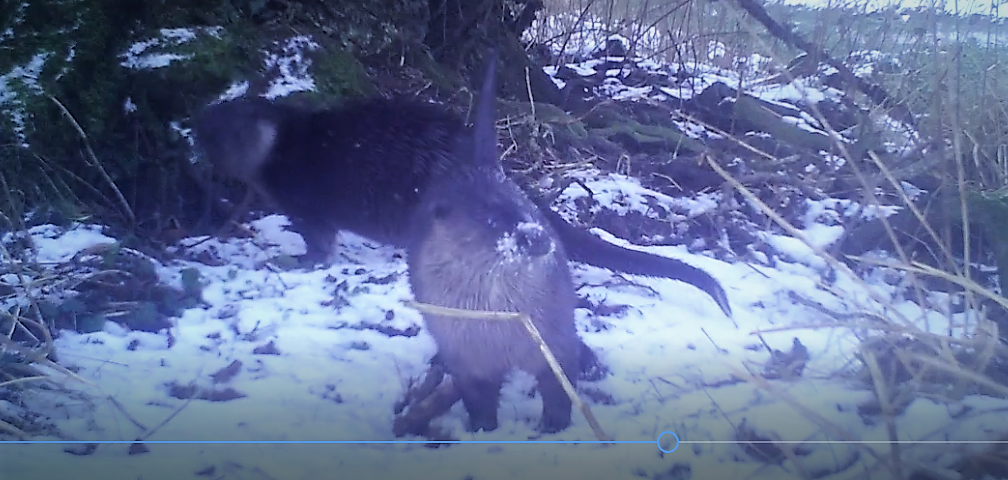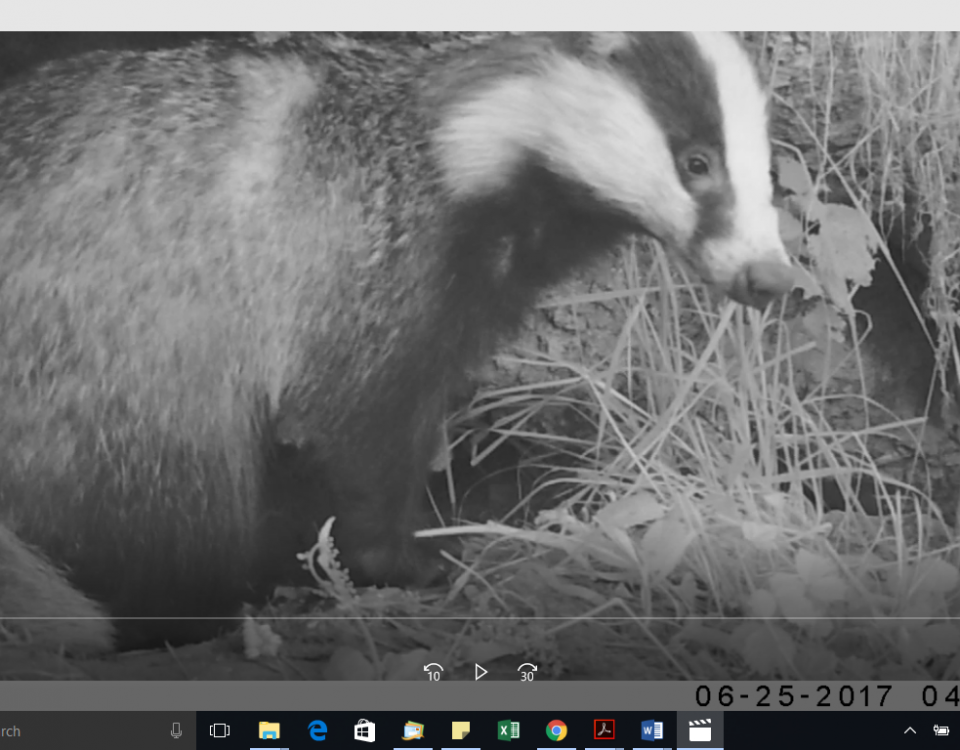Sex otter in cam trap videos-a 1-2-3 guide

Badger vs otter
17th April 2017
Beware of the Ninja badger
1st July 2017To sex otter, firstly you need to have your cam trap set good and low so that you can see the side profile from a low angle. Elevated cameras, for example ones set on trees angled downwards will not yield a great deal to go on to sex otter, neither will cam traps set at a distance of over 2-3 m from the otter. Don’t forget, that in the UK you need a licence to cam-trap at resting sites, but you can get informative footage at spraint sites where otters also frequently urinate. Taking still shots are not as informative as videos for sexing. Still shots of otter at night using covert IR are inevitable blurry as the animal is rarely still and the light is too poor for a fast shutter speed. Imagine trying to see a urine stream or a scrotum – with confidence on such poor resolution still shots.
There are different criteria to sex otter that can be used with varying degrees of confidence. Anything morphological, or resulting from morphology gives a good level of certainty, such as seeing male genitalia, or seeing the animal urinate. Also, if young cubs are happily accompanying an adult, then the adult is likely to be a female. I have seen males with cubs on occasions, but it’s pretty obvious that the male isn’t the mother (that sounds a bit weird!) by the cubs excitable behaviour.
Other characteristics have to be treated with a bit more caution such as the size/proportions of the animal; a bit of experience is required to use this characteristic and even then there is likely to be some error. Equally, I have noticed behavioural differences, but these shouldn’t be used on their own.
Finally, sexing can only be done on a proportion of cam trap videos and has its limitations. To ID a female from a juvenile male without seeing it pee is difficult although even juvenile males often have the broader look to their head but this is a subjective judgement and again needs experience.
Here are a number of videos to illustrate each of the points.
- Morphology
Morphology can be used with a good amount of certainty. The first check is whether you can see a scrotum or other male genitalia. These are quite obvious on an adult male. I think that you would have a much better chance of sexing otter using video, have a look at this one and imagine how difficult it would be to see the scrotum from a run of stills.
Video of dog otter with scrotum
- Direction of urine stream
If the animal pees out the back, then it is a female. If the animal pees forwards, then it is a male. Otters pee a lot at spraint sites! This video also shows the importance of camera position to gain data for sex ID.
Female otter with backwards urine stream.
Male otter, urine stream position
- Size/bulk
Large dog otters can be very obvious with a broader head and neck-however you also get smaller males too so caution is needed. I had a case of an otter which “looked like” a female who would sleep in a holt, then routinely collect a bit of bedding before going foraging, so I was hoping for some breeding. After a few such rests, I finally saw that she was in fact a he with a notable scrotum. A valuable lesson! And before you ask, yes, it was the same otter!
Here are videos of a big beefy dog otter and breeding female at the same structure for comparison.



